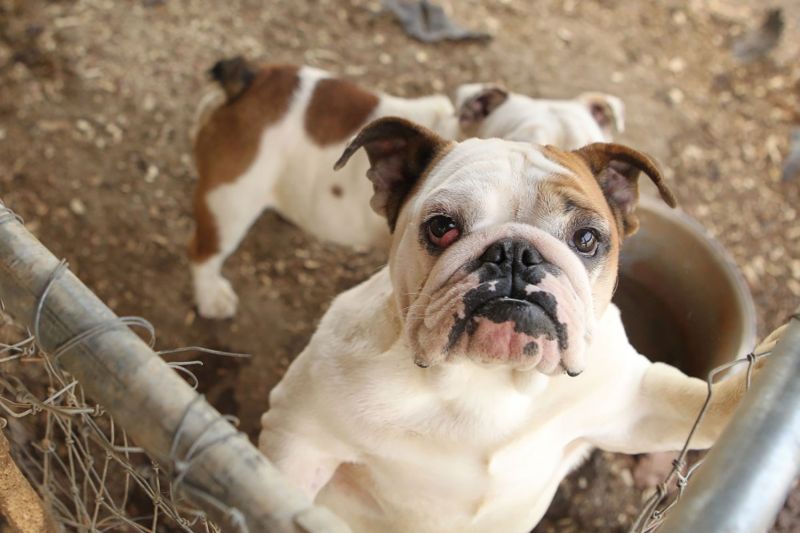Rescuers to the rescue
Rescue and shelter partnerships growing beyond adoption
July 17, 2018

The animal sheltering field has changed. We can see it in the decline in the euthanasia rate for companion animals nationwide, the increase in adoption rates in animal shelters and the “community animal welfare center” role that many animal shelters are shifting to. Working to keep pets in homes through behavior assistance, affordable and accessible medical care and food pantries are all common in the portfolio of services offered by a large number of animal shelters in 2018.
Many shelters are now finding that they have space to help homeless pets outside their immediate communities, resulting in an emergence of shelters helping shelters; strong, well-resourced shelters reaching out to help those that may still be overwhelmed and scarce on resources. These relationships are not just about transporting animals to places where they’ll have better chances at adoptions. They’re also about providing training and support.
With the changes in the sheltering world, it may be time for rescue groups to adjust their mission a bit as well. With fewer homeless pets entering the shelter system and shelters being able to adopt out their animals quicker, many shelters are needing less help on adoptions and more on other elements of their work.
In 2017, Lake County Animal Shelter in Indiana handled a cruelty case involving more than 40 French bulldogs. Mary Scheffke, president of Chicago French Bulldog Rescue, reached out to the shelter to see how her group could help. After many calls from other rescues “demanding” the dogs, Mary’s call was a welcome change, says Jessica Petalas-Hernandez, deputy director of Lake County Sheriff’s Animal Adoption & Control. “This was a high profile cruelty case and Chicago French Bulldog Rescue was very understanding about that. They asked how they could help us and were cheerleaders for the staff as we went through the process.”
“We knew about the shelter and its operations as one of our volunteers had volunteered with them previously,” says Mary. “Lake County is a small shelter and I knew this operation would be overwhelming to them. I wanted to make sure our reaching out to them would not add to that sense of overwhelming factor and wanted to make sure our rescue was there to assist them.”
Scheffke’s group wanted to provide Lake County with the resources to care for the dogs until they were released by the court. “We brought them donations of high end dog food as well as blankets and other items they needed. We also had our local volunteers bring the staff goodies as we knew they were all overwhelmed with people calling and going to the shelter. We put together handouts for their potential adopters about the special needs of French bulldogs—anesthesia protocols for the new owners’ vets as well as our rescue info if an adopter had any questions medically or otherwise.”
Petalas-Hernandez was grateful for the assistance. “They brought the staff and animals treats, provided post-adoption information for the community and posted positive comments about our care of the animals during the case on Facebook when others were not so kind.”
After the court released the dogs, Chicago French Bulldog Rescue took several who were in need of additional rehabilitation. But their board of directors viewed its commitment more broadly: to protect all French bulldogs. So the group did not give a second thought to providing resources for the dogs while they were in the shelter and providing information for adopters to ensure that adoptions were successful. Mary says, “We want French bulldogs in loving homes for life, that is our mission.”
There is a great deal of room for rescues to partner with local animal shelters in ways that go far beyond adoptions. Lifesaving rescue-based foster programs can help place animals that don’t do well in a shelter environment, and forming partnerships to keep pets in homes is another critical aspect that rescues and shelters can and should work together on. Partnering shelter and rescue groups can provide the support and skills necessary to offer community behavior classes for animals adopted, offer humane education in schools and organize community events celebrate animals. All of these items are vital tools in the fight against pet homelessness.
Though the number of homeless pets euthanized has decreased dramatically, some shelters and rescues are facing populations that have a larger number of harder to place animals. Where even a decade ago, these animals weren’t given the opportunity to be adopted out, that has shifted, and rightfully so. But these animals, deemed harder to place because of behavioral issues, chronic medical conditions or other challenges, will need greater resources to find homes. They may face longer stays in animal shelters, and rescue/shelter partnerships can help alleviate that burden on the shelter and animal.
Partnering to find solutions for long-timers can bring us to a place where all healthy or treatable and adoptable animals go home. In order to do so, we must step outside of our comfort zones and embrace the exciting change happening around us. If you’re with a rescue, ask the shelters you work with what areas they need the most help in, and see if there are ways you can fill those needs. If you’re with a shelter, take a look at your rescue partnerships and see if there are things rescues could assist you with, or ways that you could work together to amplify your impact in your community. There’s no time like the present to innovate, and if we want to continue to drive down euthanasia rates, innovation is going to be crucial to our success.
In what ways do you innovate to help drive down euthanasia rates?

